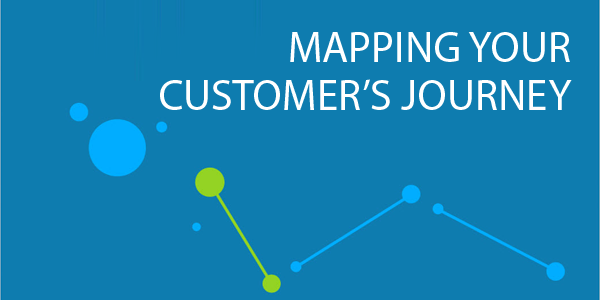Customer journey mapping (CJM) is an essential tool for modern businesses to visualize and optimize the customer experience (CX). It provides actionable insights into customer behaviors, emotions, and pain points across every touchpoint, enabling businesses to deliver superior experiences, foster loyalty, and drive sustainable growth.
Why Customer Journey Mapping Matters
Customer journey mapping offers a structured framework to understand how customers interact with a brand. By identifying key touchpoints and emotional drivers, businesses can enhance customer satisfaction by resolving pain points, build long-term loyalty through personalized experiences, identify and remove friction points that lead to customer churn, improve cross-functional collaboration across departments, and optimize resource allocation by prioritizing high-impact interactions.
According to Forrester, 70% of companies use journey maps to navigate customer complexities. However, many fail to extract actionable insights due to poor implementation, data silos, and lack of customer involvement.
Common Challenges in Customer Journey Mapping
Understanding and implementing customer journey mapping can be complex, with several obstacles that hinder its effectiveness.
Siloed departments create fragmented customer experiences, as marketing, sales, and support teams often operate independently. This results in inconsistent service, leading to customer frustration. Overcomplication is another major issue—overly detailed maps can overwhelm stakeholders and divert focus from critical touchpoints. Many organizations also lack customer involvement, relying on assumptions rather than real feedback, which leads to inaccurate and ineffective maps. Additionally, without clear goals and KPIs, CJM efforts lack direction and fail to deliver measurable ROI.
Pro Tip: Leverage tools like UXPressia or Touchpoint Dashboard to streamline data collection and map visualization, ensuring clarity and actionability.
9 Actionable Steps to Optimize Your Customer Journey Mapping
A well-structured customer journey map can serve as a powerful blueprint for enhancing CX, improving customer retention, and streamlining business operations.
1. Define Clear Objectives & KPIs
Begin by identifying the specific problem your CJM aims to solve. Whether it’s reducing churn by 20% or improving CSAT scores by 15%, having a defined goal ensures clarity. Aligning these objectives with measurable CX metrics like Net Promoter Score (NPS), Customer Satisfaction Score (CSAT), or Customer Effort Score (CES) helps track progress effectively.
2. Break Down Organizational Silos
Fostering collaboration across departments is crucial for a seamless customer experience. Cross-functional workshops and shared CX goals encourage knowledge sharing between teams, ensuring a unified strategy that aligns with customer expectations.
3. Assign Ownership & Accountability
Designate a CX leader to oversee the mapping process and ensure consistency. Assigning responsibility for specific touchpoints—such as billing, onboarding, and customer support—ensures that each aspect of the customer journey is optimized and well-managed.
4. Prioritize High-Impact Touchpoints
Identifying “moments of truth” is essential for shaping customer perceptions. Key interactions, such as the onboarding experience, issue resolution, and renewal process, have a significant impact. Focusing on quick wins—low-effort improvements that yield significant results—can drive immediate enhancements in CX.
5. Validate with Real Customer Feedback
Surveys, interviews, and usability testing provide insights into customer sentiments. Leveraging analytics tools like Hotjar or Medallia helps track user interactions, pain points, and satisfaction trends, ensuring that journey maps are based on actual customer experiences rather than assumptions.
6. Map the Entire Ecosystem
A comprehensive journey map should encompass all customer interactions across both owned channels—such as websites and apps—and external influences like social media and third-party reviews. Indirect touchpoints, such as referrals and word-of-mouth recommendations, should also be considered to understand the full customer experience.
7. Simplify for Stakeholder Buy-In
Using visual storytelling techniques, such as infographics and journey mapping tools like Miro and Lucidchart, enhances clarity and facilitates understanding among stakeholders. Avoiding unnecessary details ensures that the focus remains on critical insights and actionable improvements.
8. Align with Financial Goals
Linking CX improvements directly to business outcomes strengthens executive buy-in. For example, Bain & Company reports that a 10% increase in retention can boost profits by 30%. Quantifying the financial impact of improving key touchpoints helps demonstrate the ROI of CX initiatives.
9. Partner with CX Experts
Engaging consultants like Fusion CX can provide advanced strategies, such as omnichannel mapping and employee training. Leveraging external expertise ensures that best practices are implemented effectively, optimizing CX maturity and long-term success.
Tools for Effective Customer Journey Mapping
Selecting the right tools is essential for building an effective customer journey map, enabling businesses to gather data, visualize touchpoints, and streamline collaboration.
| Category | Tools |
|---|---|
| Visualization | Smaply, Canvanizer |
| Analytics | Google Analytics, Qualtrics |
| Collaboration | Miro, Lucidchart |
| All-in-One Platforms | UXPressia, SuiteCX by QuestionPro |
These tools enable businesses to collect multi-channel data, visualize journeys, and collaborate efficiently across teams.
Avoid These Common Mistakes
Ignoring employee insights can result in overlooked pain points, as frontline employees often have valuable perspectives. Static maps are another pitfall—customer behaviors evolve, and journey maps should be updated periodically to reflect changes in expectations and trends. Overlooking emotional drivers can also weaken CJM efforts; using empathy maps helps capture customers’ emotions, motivations, and frustrations at each touchpoint.
Final Take: Transform CX Through Strategic Journey Mapping
Customer journey mapping is not a one-time exercise—it’s an ongoing process that demands continuous refinement. Businesses that align teams around shared goals, leverage real customer insights, and make data-driven decisions can enhance customer loyalty and satisfaction, reduce operational inefficiencies, and drive revenue growth through personalized engagement and proactive service.
Start Today
Audit your current customer journey, identify friction points, and implement the steps above to create a roadmap for sustained CX success. Fusion CX specializes in crafting data-driven customer journey maps that align business goals with customer expectations. Our expert team provides tailored strategies, leveraging industry-leading tools and analytics to identify pain points, enhance engagement, and drive business growth. By partnering with Fusion CX, businesses can ensure a seamless, customer-centric approach that fosters loyalty and maximizes long-term value.

